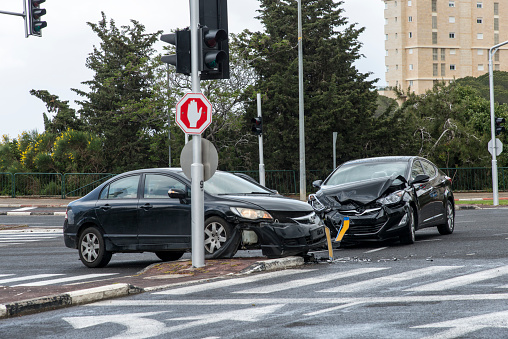Why are intersection accidents so complicated?

For motor vehicle accidents that result in injury or death, more than half occur near or at intersections, according to the U.S. Department of Transportation’s Federal Highway Administration (FHWA).
Now, FHWA intersection safety and design research has led to innovative intersection and interchange designs that utilize modern roundabout, mini-roundabout, continuous flow intersections, and other designs to mitigate the risk of car accidents.
Through its research, FHWA investigated causation factors of traffic crashes at multi-lane roundabouts. It also evaluated different types of protected intersection designs that focus on safety for pedestrians and bicyclists at large intersections.
Modular mini-roundabouts made of recycled plastics were also examined for civilian, military, and disaster relief use.
FHWA’s in-house study on a multitude of large datasets explored the different types of driver behaviors at a variety of intersections to develop big data analytics and visualization tools to identify high-crash locations, detect traffic accidents, and assess the broader societal impacts of these traffic crashes.
By identifying some of the most common and severe problems at intersections, new innovative safety countermeasures can be implemented on roadway projects in the hopes of providing more robust intersection safety for drivers, passengers, bicyclists, and pedestrians.
What are the most common types of intersection accidents?
The most common types of intersection accidents include:
- Side impact collisions – Also known as T-bone crashes, these types of accidents frequently happen when a motorist does not stop for a traffic signal before proceeding through the intersection or makes a turn without yielding to oncoming traffic.
- Rear-end accidents – If another driver is speeding, distracted (e.g., texting while driving), fatigued, driving under the influence, or otherwise acting negligently while approaching an intersection, a motorist who is legally stopped at a red light or stop sign can get rear-ended.
- Head-on crashes – While rare, a head-on collision has the potential to cause life-threatening injuries to everyone involved. Head-on crashes in intersections occur when a driver crosses over into another lane and strikes another motorist in the front end. In most cases, negligence is to blame.
- Sideswipes – Common in multilane intersections, a sideswipe accident can happen when one driver is trying to make a turn and another driver strikes the vehicle while passing it. This type of accident can also occur when two more vehicles attempt to merge into a lane simultaneously.
- Pedestrian accidents – Pedestrians, bicyclists, and other non-motorists can get hit by a car while lawfully trying to cross the street at an intersection.
Determining fault in cases that involve intersection accidents can be exceptionally complex without the help of an attorney who has experience handling these types of claims. Keep in mind that without the right evidence, your claim could come down to your word vs. the word of the other driver.
Injured in an intersection accident? We’re the team to call.
Despite new safety studies and designs, car accidents at intersections and other roadways are daily realities in which victims find themselves with a severe injury that can sometimes be life-altering. At Romanow Law Group, failure is not an option when it comes to fighting for crash victims. The attorneys from our dedicated legal team understand how the outcome of your case can impact you and your family for years to come, and that’s not something we take for granted.
If you or a loved one has been injured in an accident, contact us today for a free consultation. Our office is located in Pittsburgh, PA and we would be honored to speak with you about your potential legal case.
